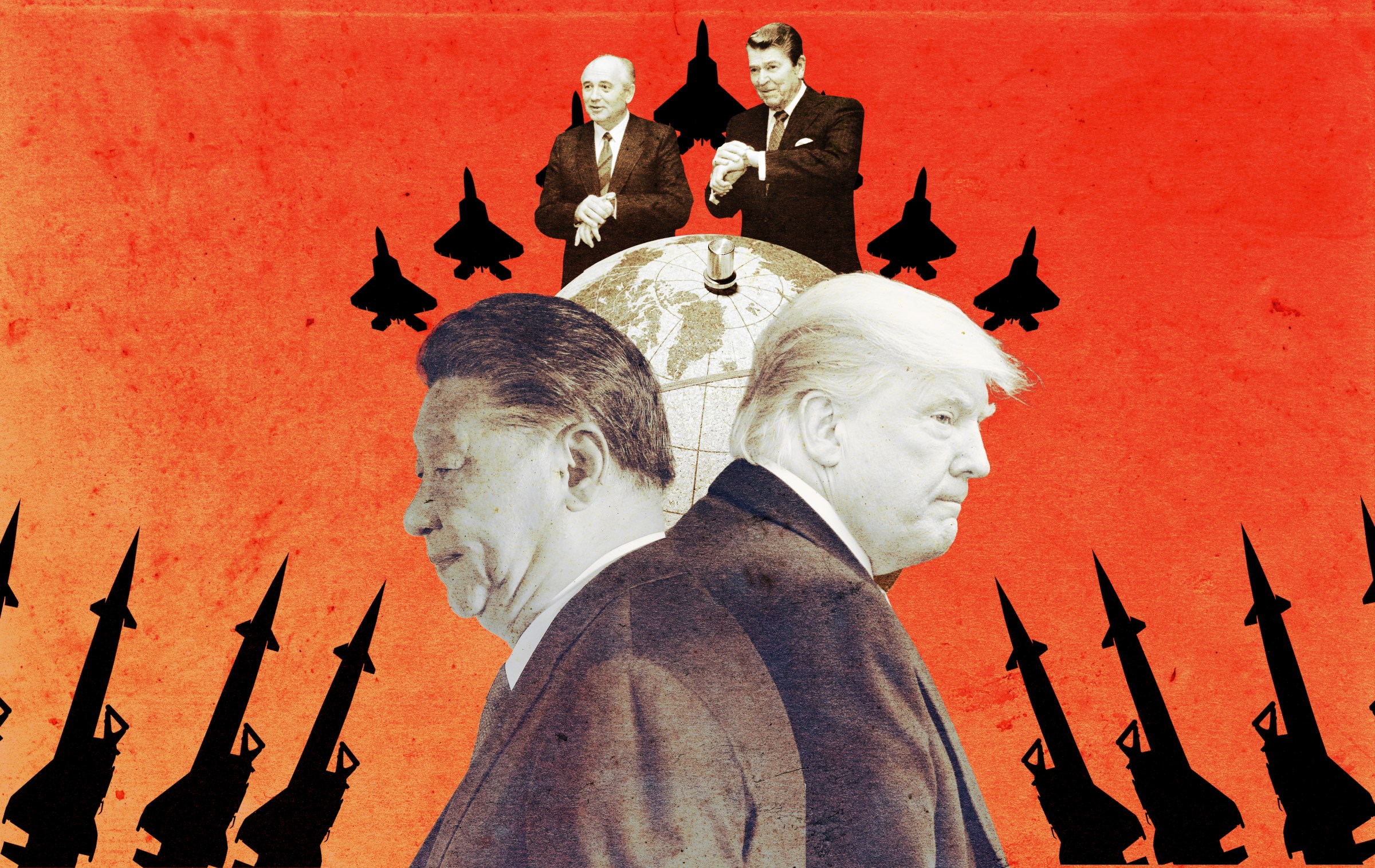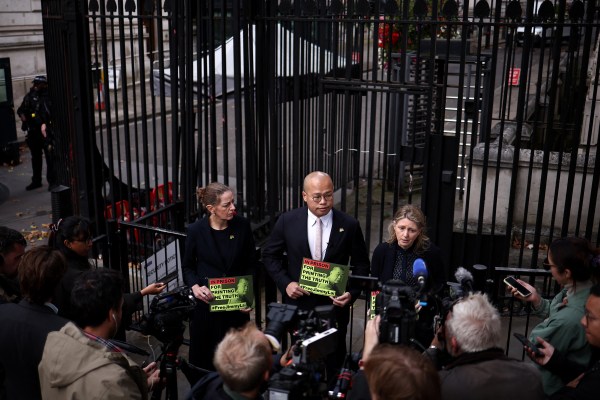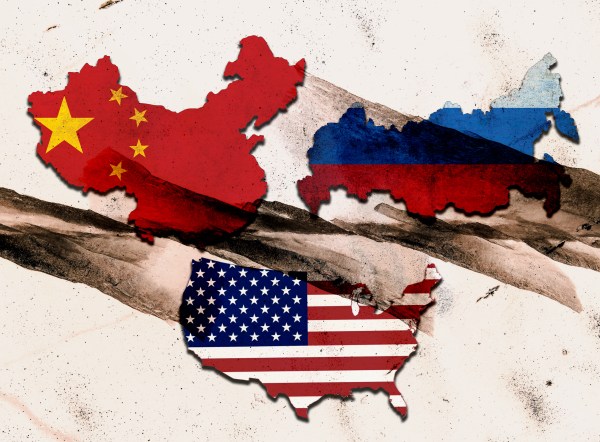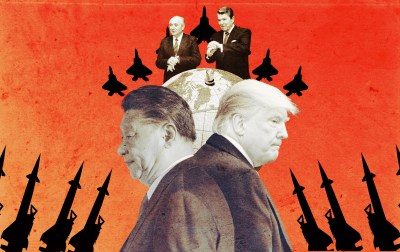Turn any article into a podcast. Upgrade now to start listening.
Premium Members can share articles with friends & family to bypass the paywall.
The United States and China are firmly locked in a cold war struggle whose outcome will be the most important determinant of peace, prosperity, and quality of life in international politics over the next decade.
That view enjoys nearly unanimous agreement—in Beijing and Washington, among Democrats and Republicans, and around the world in Brussels, Delhi, and Abu Dhabi, where leaders increasingly frame choices and consider options with an eye toward how they should position their nations within this new bipolar power contest.
This piece is the first in a series that will propose a strategy for the United States to conduct and win the modern Cold War. That strategy will include a general set of principles and consistent, specific tactics for grappling with critical issues, including technology and artificial intelligence, Taiwan and territorial conflict, and the flow of goods, ideas, and money.
This strategy will build on the unprecedented (and unexpected ) success of 1980s Cold War statecraft. That extraordinary victory was conceived and executed by a set of courageous leaders and advisers who could not have known in advance that the risks they took would play out in success.
The 1980s analogy, like all historical cases, isn’t perfect. China is not Russia, 2025 is not 1985, the Sino-American relationship is more deeply interdependent economically than the U.S.-Soviet relationship ever was, and Trump and Xi are not Reagan and Gorbachev. Consider that agreed. But though history doesn’t repeat, it often rhymes. There is a credible and workable center-right inspired Cold War statecraft theory and strategy waiting for America—if we have the courage and discipline to embrace and execute on it.
How we got here.
That we’d end up in a Sino-American Cold War was nearly inevitable, though that wasn’t the conventional wisdom a few decades ago. During the 1990s, Democrats held the view that intentional efforts to incorporate a fast-emerging China as a great power into an American-led world order of open trade through WTO membership and relaxation of certain technology export controls would prompt a detente or even an alignment of sorts. They predicted that we’d see a gradual political liberalization in China, a softening of major security issues in the Pacific, and a relationship that at its best might come to resemble that between the U.S. and the European Union.
“What happened over the course of the 1980s was a deep surprise and a historic success. Achieving a peaceful and victorious end to the Cold War in 1989 was probably the greatest win of modern statecraft bar none.”
In retrospect, that view was logically flawed and historically naive. Its consequences were harmful overall to both countries’ political and economic development, and almost certainly to the relationship itself.
Policy experiments can be overrun by structural forces, and structural forces matter the most at this point. Like these: The Chinese economy in nominal terms remains smaller than the U.S. economy, but it’s almost 30 percent larger when corrected for purchasing power parity—and it continues to grow quickly. On the military front, U.S. planners believe the Chinese are targeting 2027 as a deadline for developing military capability sufficient to threaten kinetic warfare against Taiwan. Both sides are developing technology stacks for artificial intelligence that are increasingly separate and nationally autonomous, to the point where the phrase “sovereign AI” is becoming commonplace. The American foreign policy elite no longer bothers to talk much about a liberal international order that supposedly would be in China’s best interest to join, as it did (in a rather self-indulgent way) for decades. All the while, China openly pursues an ideological and institutional campaign, in fora like the Shanghai Cooperation Organization, to create modern alternatives to the clunky, 80-year-old international institutions that Americans still somehow label “pillars of postwar order.”
Calendar decades don’t determine the rise and fall of great powers or coincide with structural shifts in international politics. But halfway through the current decade, it seems a fair bet that we’re approaching an inflection point of some kind toward the end of the 2020s.
That timing matters, because right now it is very difficult to discern in American policy—or even in underlying debates—a coherent theory of the case about how to conduct and win this new cold war. It’s easy to critique the Clinton administration’s co-optation theory, and equally so the Biden administration’s manifesto of “competition not conflict” with China. But what has actually replaced these ideas as guiding principles of high-level statecraft?
Ambiguity and vacillation, for the most part. The United States now has a Department of War, but does that signal an intention to China any different than ongoing deterrence? Do U.S. export controls aim to get Chinese AI companies addicted to and dependent on high performance Nvidia GPUs—or not? What technical controls or ownership arrangements make it acceptable for a consumer-facing social media company like TikTok to operate freely inside the U.S.? What is the endgame for a repeatedly suspended tariff regime that presumably has some alternative plan for how the products of China will shape the U.S. consumer economy?
It’s true that the Trump administration certainly has a high tolerance for policy ambiguity—and sometimes seems to deploy it as an intentional bargaining tactic, to unsettle the expectations of others. But with China? The level of ambiguity is extreme and does not seem to be generating any particular advantages in any visible bargaining dynamic. Beijing doesn’t appear unsettled; it is mobilized. And Chinese leaders are adept at arbitraging the confusion that a lack of coherent statecraft creates.
The simplest explanation that fits the facts is probably the best. And that is that the current administration simply does not have a coherent theory of Cold War statecraft. We need one badly, and soon.
Lessons from the past.
That the Cold War between the United States and the Soviet Union would end peacefully and with the U.S. as the clear victor seemed unlikely as late as the mid-1980s.
To grasp just how unlikely it was, go back and recapture (if you can endure it) the poly-crisis experience of the late 1970s and the sentiment that accompanied it. Rarely if ever has there been a deeper moment of apprehension about American decline or a higher level of anxiety about superpower conflict. The Iranian revolution had overturned a critical American ally in the most volatile region of the world and subjected the U.S. to a deeply humiliating hostage crisis. Russia invaded Afghanistan in what was seen at the time as a sign of mounting strength and the next step in an empire’s quest for warm-water ports. The U.S. economy was stuck in a nearly decade-long period of stagflationary pain so tangible that it had its own bespoke metric, the “misery index” (adding inflation and unemployment together). The crown jewel treaty of a nuclear arms control regime that was the linchpin of U.S.-Soviet detente, SALT II, was “buried in the sands of the Ogaden” as Soviet proxy forces were on the march to gain greater influence and power over the developing world, at America’s expense. All of this in the context of the Vietnam “allergy,” the memory of America’s humbling in the final withdrawal of Saigon fresh in the mind.
Layer on top of these poignant events an intellectual framework in the academic international relations world that helped to make sense of all this, but not in a way that would have predisposed any American toward optimism. It would be a mistake to overstate the influence of academic theory on policymakers, but as part of the overall foreign policy zeitgeist and atmosphere of the moment, it set the tone and was of a piece.
Ken Waltz’s 1979 blockbuster Theory of International Politics (which quickly became the baseline model for nearly all academic and most think-tank debate at the time) was a watershed. Before Waltz, great power politics was largely a story of diplomatic and military history, focusing on leaders and the decisions they made. Or it was a story about regime type—democracy vs. authoritarian, kings or people. Waltz left those arguments behind to argue that deep structural forces—put simply, the highly concentrated bipolar balance of power was the primary determinant of Cold War politics and statecraft. That balance of power made for a hyper-stable Cold War equilibrium that would not go away anytime soon. The decisions of leaders were downstream of that structural reality and regime type just didn’t matter very much.
In Waltz’s model, the U.S. and the Soviet Union, so much more powerful than any third-party potential allies, were in practice the only meaningful threat to each other’s vital interests. As a result, discretionary choice for leaders was constrained. Uncertainty and resulting room for error in international politics was remarkably low. The result would be stability—an intense and robust competition in which neither side would fall behind simply because it knew it could not afford to do so. Cold War for as long as the eye could see.
The second most important model of the time was Robert Gilpin’s 1981 War and Change in World Politics. Gilpin argued, contra Waltz, that the bipolar balance of power was not stable for the long term because differential growth rates would over time create unsolvable dilemmas for great powers that could not afford the rising costs of maintaining international order. He sketched out three potential pathways for systems change—superpower accommodation, internal reform, or
“hegemonic war.”
This neat story largely collapsed in the last chapter, however, when he tried to assess what was the most likely trajectory for the U.S.-Soviet Cold War. Accommodation had been tried and failed in early 1970s detente. Neither the U.S. nor the Soviet Union seemed capable of meaningful internal reform even under the pressure of intense competition (as Waltz saw it) from the other. That left hegemonic war as the only available pathway, but Gilpin believed that the presence of nuclear weapons was a new and unprecedented factor that blocked out war, at least by intention. That left Gilpin’s theory, ironically, in much the same endgame as Waltz’s, just by a different route—the Cold War would likely continue simply because there was no way for it to end.
What now?
Against this pessimistic backdrop, what happened over the course of the 1980s was a deep surprise and a historic success. Achieving a peaceful and victorious end to the Cold War in 1989 was probably the greatest win of modern statecraft bar none. It was also the single most important 20th-century achievement of the center-right in American politics, and for a cast of extraordinary leaders and thinkers assembled around Presidents Reagan and George H.W. Bush. Together they developed and executed a clear theory of the case about how to end the Cold War without undermining the coherence of basic global structures and without setting off World War III. They won.
America’s objectives today can and should be equally ambitious. The goal cannot be limited to only survival, stalemate, or stability for its own sake. It’s increasingly clear that China’s goals aren’t limited in that way: Beijing isn’t aiming for a balance of power that perpetuates the status quo. Neither should we. The second half of this decade is set to be a critical inflection point in this contest. The U.S. needs an overall strategy and specific, consistent policies on the most critical issues that make up the new cold war.
With not-so-distant history as our guide, we can build both.






Please note that we at The Dispatch hold ourselves, our work, and our commenters to a higher standard than other places on the internet. We welcome comments that foster genuine debate or discussion—including comments critical of us or our work—but responses that include ad hominem attacks on fellow Dispatch members or are intended to stoke fear and anger may be moderated.
With your membership, you only have the ability to comment on The Morning Dispatch articles. Consider upgrading to join the conversation everywhere.